 W
WSixty-eight bowlers have taken a wicket with the very first ball they bowled in one of the three formats of international cricket. Twenty bowlers have performed this feat in Test cricket. The first was Australian Tom Horan, who dismissed Walter Read with his first ball on 26 January 1883, and the most recent is South Africa bowler Hardus Viljoen who dismissed the England captain Alastair Cook on 15 January 2016. Seven of these twenty bowlers have been English cricketers. However, this accomplishment has not always led to a long and illustrious career. Only Maurice Tate, Intikhab Alam and Nathan Lyon went on to play in more than ten Tests. Arthur Coningham, Matt Henderson, Dennis Smith, and Tyrell Johnson were One-Test wonders, and Smith's only Test wicket was the one he took with his first ball.
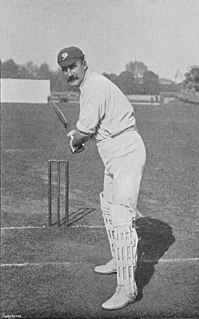 W
WThe County Championship is an annual first-class cricket league competition for county cricket clubs in England and Wales. The league is contested on a round-robin basis and the championship awarded to the team that is top of the league at the end of the season. Essex County Cricket Club are the current champions, claiming the title in the 2019 season.
 W
WIn cricket, a five-wicket haul – also known as a five-for or fifer – refers to a bowler taking five or more wickets in a single innings. This is regarded as a notable achievement. This list is a compilation of total five-wicket hauls taken by international cricketers, split between different formats and presents a good view to compare performance of bowlers in all 3 formats of the game that are played at an international level.
 W
WCricket is a bat-and-ball game that originated in England around the 16th-century. It is played between two teams, with each trying to score as many runs as they can, across one or two innings. Records for early cricket matches are incomplete and often non-existent, especially for very minor matches, but cricket historians have still attempted to trace the history of the "highest single innings score by a batsman in any class of cricket".
 W
WOne Day International (ODI) cricket is played between international cricket teams affiliated to the International Cricket Council (ICC), the global governing body of cricket. Men's ODI cricket is played between teams which are Full members of the ICC and the top four Associate and Affiliate members who achieve ODI status temporarily. Since 2018, matches played by Associate and Affiliate members as part of the Asia Cup or the ICC World Cup are also considered as ODIs. In women's cricket matches played between the top 10 ranked teams – as announced by ICC – are given ODI status, as are matches played as a part of the ICC Women's World Cup or ICC Women's Championship. ODIs consist of one innings per team, with a limit to the number of overs. This limit is currently 50 overs, although in the past it has been 55 or 60 overs.
 W
WThe International Cricket Council (ICC) was founded at Lord's on 15 June 1909 as the Imperial Cricket Conference, with Australia, England, and South Africa as its founding members. In the beginning, only countries within the Commonwealth could join. These members were then joined by India, New Zealand, and the West Indies in 1926 and later by Pakistan in 1953. In 1961, South Africa resigned due to their leaving the Commonwealth, but they continued to play Test cricket until their international exile in 1970.
 W
WThe Gabba, also known as Brisbane Cricket Ground, is an Australian sports stadium located in the Brisbane, Queensland suburb of Woolloongabba. It was first used in 1895 and is the home ground of the Queensland cricket team. It has been used for international cricket since 1931 when the ground hosted its first Test match. The first One Day International at the ground was held in 1979 and in 2006, the ground hosted its first Twenty20 International match. Women's international cricket was first played on the ground in 1985.
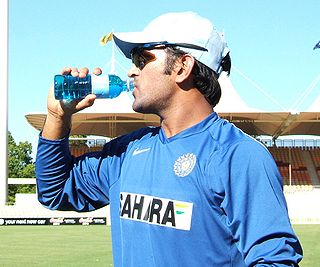 W
WA One Day International (ODI) is a form of limited overs cricket, played between two teams that have international status, as determined by the International Cricket Council (ICC). The first ODI match was played between Australia and England in 1971 at the Melbourne Cricket Ground, as a 40-over match. An ODI can have three possible results—it can be won by either of the two teams, it could be tied, or it could be declared to have "no result". In cricket, a match is said to be tied if it ends with both the teams scoring exactly the same number of runs and with the side batting second having completed its innings with all 10 batsmen being out or the predetermined number of overs having been completed. In case of rain-affected matches, the match is tied if the Duckworth–Lewis–Stern method indicates that the second team exactly meets but does not exceed the par score. There have been two occasions where a match has been tied, that the team which had lost fewer wickets was declared the winner. Pakistan was involved in both matches, losing one against India and winning the other against Australia.
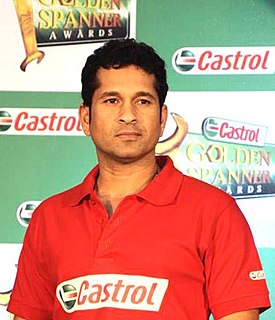 W
WOne Day International (ODI) cricket is played between international cricket teams who are Full Members of the International Cricket Council (ICC) as well as the top four Associate members. Unlike Test matches, ODIs consist of one inning per team, having a limit in the number of overs, currently 50 overs per innings – although in the past this has been 55 or 60 overs. ODI matches are a subset of List A cricket and so records and statistics are recorded both for specifically for ODIs and within List A. The earliest match recognised as an ODI was played between England and Australia in January 1971; since when there have been over 4,000 ODIs played by 28 teams. The frequency of matches has steadily increased, partly because of the increase in the number of ODI-playing countries, and partly as the cricket boards of those nations seek to maximise their revenue with the increased popularity of cricket, a process that dates from the time of the Packer Revolution.
 W
WA quadruple century has been scored ten times in first-class cricket by eight different players. It was first achieved in 1895 by Archie MacLaren, playing for Lancashire against Somerset, while both the most recent occurrences have been by Brian Lara, who is also the only player to have managed the feat in Test cricket. Lara holds the record for the highest score in first-class cricket, having made 501 not out in 1994. Bill Ponsford is the only other player to have scored two quadruple centuries, doing so in 1923 and 1927 for the Victoria cricket team. Ponsford's scores were both made at the Melbourne Cricket Ground, making it one of two venues to have hosted two quadruple centuries, along with the County Ground, Taunton. Two teams have conceded two quadruple centuries; Somerset and Queensland.
 W
WThis is a general glossary of the terminology used in the sport of cricket. Where words in a sentence are also defined elsewhere in this article, they appear in italics. Certain aspects of cricket terminology are explained in more detail in cricket statistics and the naming of fielding positions is explained at fielding (cricket).
 W
WIn the sport of cricket, a hat-trick is an occasion where a bowler takes three wickets in consecutive deliveries, dismissing three different batsmen. As of February 2023, this feat has only been achieved 45 times in more than two thousand Test matches, the form of the sport in which national representative teams compete in matches of up to five days' duration. The first Test hat-trick was recorded on 2 January 1879, in only the third Test match to take place, by the Australian pace bowler Fred Spofforth, nicknamed "The Demon Bowler", who dismissed three English batsmen with consecutive deliveries at the Melbourne Cricket Ground. The most recent hat-trick was taken by Pakistan's pace bowler Naseem Shah against Bangladesh in February 2020.
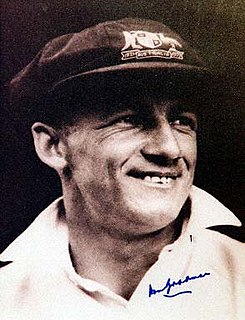 W
WTest cricket is played between international cricket teams who are Full Members of the International Cricket Council (ICC). Unlike One Day Internationals, Test matches consist of two innings per team, with no limit in the number of overs. Test cricket is first-class cricket, so statistics and records set in Test matches are also counted toward first-class records. The duration of Tests, currently limited to five days, has varied through Test history, ranging from three days to timeless matches. The earliest match now recognised as a Test was played between England and Australia in March 1877; since then there have been over 2,000 Tests played by 13 teams. The frequency of Tests has steadily increased partly because of the increase in the number of Test-playing countries, and partly as cricket boards seek to maximise their revenue.
 W
WA triple century in Test cricket has been scored on 31 occasions by 27 batsmen from eight of the twelve Test-cricket playing nations. No player from Afghanistan, Bangladesh, Ireland or Zimbabwe has scored 300. The frequency of a batsman scoring a Test triple century is slightly lower than that of a bowler taking a Test hat-trick.
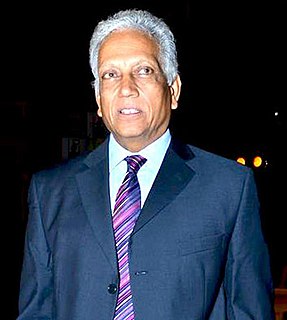 W
WIn cricket, a player is dismissed when they lose their wicket. At this point, the batsman must discontinue batting and leave the field permanently. A batsman can be dismissed in a number of ways, the most common being bowled, caught, leg before wicket (LBW), stumped, run out and hit wicket. Much rarer are hit the ball twice, obstructing the field, retired out and timed out. These are regarded by analysts as unusual ways of dismissals in cricket, where the bowler is denied any credit. Handled the ball was a previously a separate method of dismissal, now incorporated into obstructing the field. As of September 2017, there have been twenty-two instances of players being dismissed unusually in international cricket: ten in Test cricket, nine in One Day Internationals (ODIs), one in Twenty20 Internationals (T20Is) and two in Women's One Day International cricket.
 W
WThe Wills' 1928 cricketers was a set of trading cards issued by the Imperial Tobacco Co. under its W.D. & H.O. Wills brand. It consisted of a series of 50 collectable cigarette cards to commemorate leading first-class cricketers who had played county cricket in the 1927 English cricket season; and including nine who had toured South Africa in 1927–28 with the Marylebone Cricket Club team. This set is now a collectible and, in mint condition, has an estimated value (2017) of £90.
 W
WThis is a list of Wisden Trophy Test cricket series played between England and West Indies which dates back to 1963. It was usually played alternately in England and West Indies, although early series were predominantly played in England. "The Wisden Trophy" series varied between three and six Tests.